
Scientists have conducted research on discrete burning, a form of fire that jumps from one fuel source to another, using iron powder in zero gravity. The leftover product after combustion is iron oxide, a substance that doesn’t produce carbon dioxide and can be endlessly recycled. Following these microgravity experiments, efficient iron-burning furnaces have been developed, leading to the creation of a circular, carbon-free energy storage. A demonstration plant is operational in The Netherlands, and multiple start-ups are exploring this carbon-free fuel for factories and industrial processes. Looking ahead, this metal fuel could also be used for sustainable lunar outposts, potentially using lunar minerals and ice to produce metallic powders for propulsion and water for consumption. Credit: Iron+
Researchers have utilized microgravity experiments to study discrete burning of iron powder, leading to carbon-free, endlessly recyclable energy storage. This has promising applications on Earth and for future sustainable lunar outposts.
Everything burns. Given the right environment, all matter can burn by adding oxygen, but finding the right mix and generating enough heat makes some materials combust more easily than others. Researchers interested in knowing more about a type of fire called discrete burning used ESA’s microgravity experiment facilities to investigate.
In a series of parabolic flights and on sounding rockets launched from Sweden, a team from Professor Jeffrey Bergthorson at McGill University in Canada and Eindhoven University of Technology in The Netherlands investigated burning iron powder in zero gravity. Their research was pure physics, the scientists wanted to know more about discrete burning whereby flames do not burn through fuel continuously but jump from one fuel source to another. This form of fire hardly occurs naturally on Earth, but an example is a forest fire where one tree burns completely and the fire jumps to the next tree when the temperature increases enough for combustion.
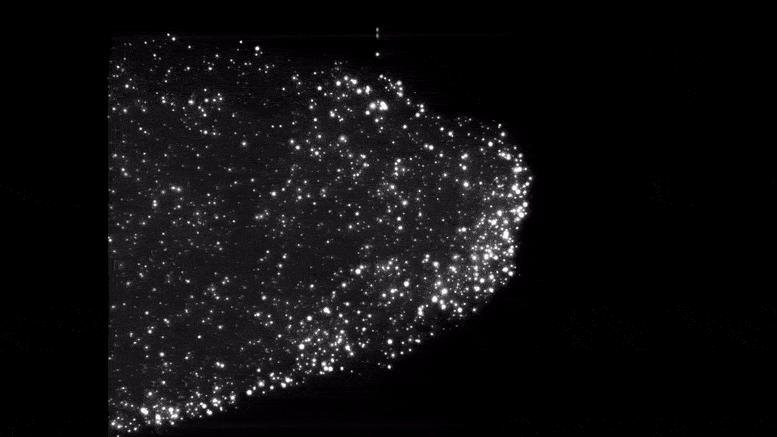
This hypnotic video of discrete burning was recorded during a parabolic flight experiment on board the Falcon-20 aircraft of the Canadian National Research Centre that offers researchers up to eighteen seconds of precious zero-gravity. Credit: Perwaves team
Burning iron dust in experiments on zero-g aircraft and rocket flights allowed for the iron particles to float and ignite discreetly. High-speed cameras captured the spectacle and allowed the researchers to better understand the phenomenon, resulting in computer models that showed the ideal conditions to burn the fuel on Earth.
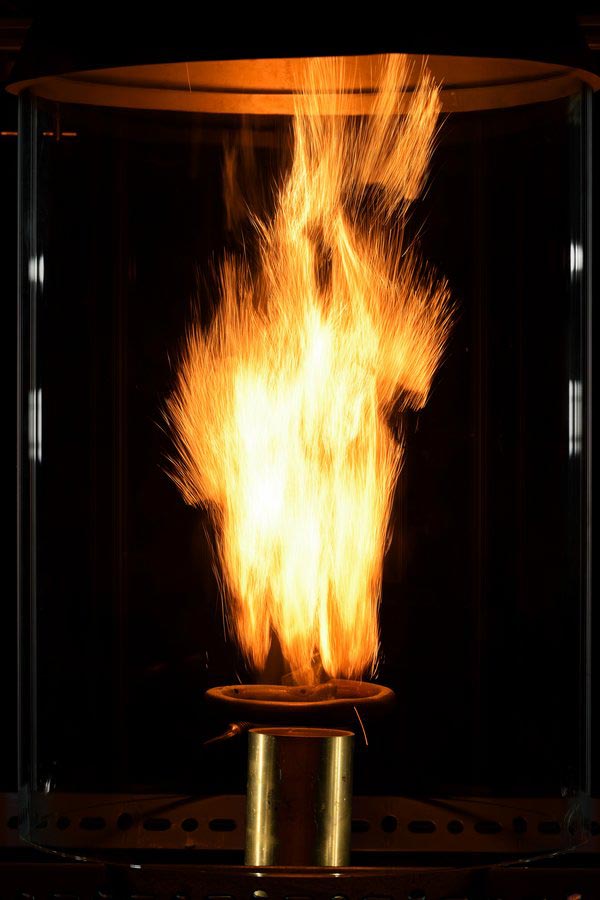
Did you know iron could burn? The combustion of iron powder seen here is taking place on an entirely smokeless, carbon free basis. Credit: TU/e / Solid / Bart van Overbeeke
Discrete burning for sustainable energy
With the new understanding made possible from microgravity research, it became possible to build efficient and practical iron-burning furnaces.
The advantage of burning iron is down to chemistry. Essentially, burning fuel is the process of transforming a material by adding oxygen atoms. This is why carbon-based fuel produces the greenhouse gas carbon dioxide when two oxygen atoms are added to the carbon-based fuel such as wood, coal, or oil. With iron, the leftover product after combustion is iron oxide, more commonly known as rust. No carbon dioxide is produced, and the rusty iron can be easily collected as it doesn’t form a gas – burning iron emits no noxious gases at all.
Iron rust can even be processed to remove the oxygen and return it as iron using hydrogen. By using electricity from sustainable sources, iron as a fuel can become a circular, endlessly recyclable energy storage.
A demonstration plant is already up and running in Budel, near Eindhoven, The Netherlands, using iron as its fuel source this generator can produce 1 MW of steam in a unit that stands in a warehouse. Scaled up such an iron power plant could produce much more energy.
Multiple start-ups are already pursuing this carbon-free fuel, to power factories and industrial processes.
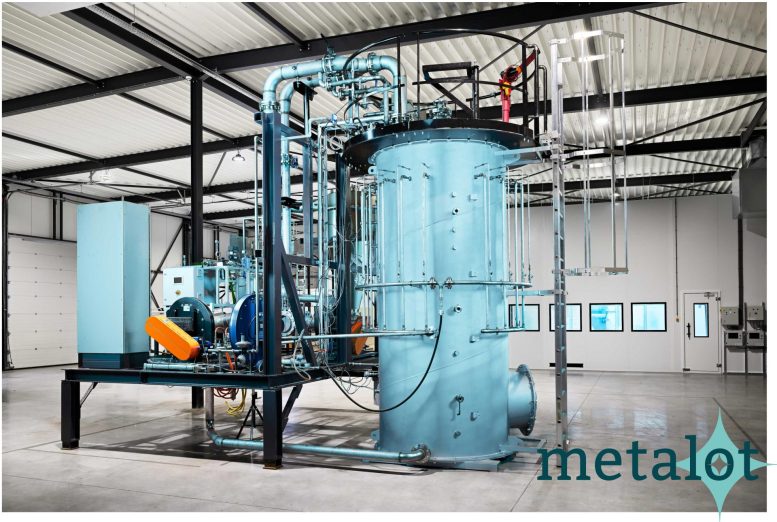
Iron furnace demonstration plant. Credit: Metalot
From space to Earth and then to the Moon
As space agencies prepare to build sustainable lunar outposts, supplying energy for the astronauts on the Moon is just one of the challenges to overcome. Metal fuel could be a solution. Using solar energy, not only aluminum and silicon powders can be produced from lunar minerals, but also hydrogen and oxygen can be harnessed from lunar ice.. The hydrogen can then be used to convert lunar dust that is high in iron and titanium to produce water and iron powder. The metallic powders and oxygen from the water ice can be used as propellants for rockets or ground transportation and the water by-product can even be used as drinking water.
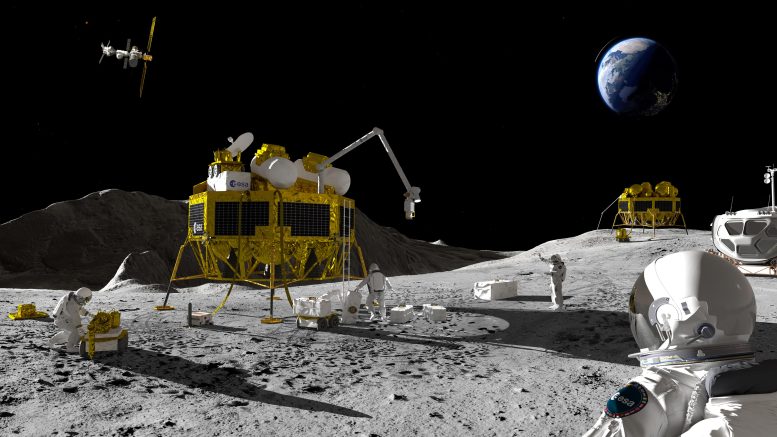
Artist’s impression of a Moon exploration scenario. Credit: ESA–ATG
This process might seem like science fiction now but using iron as a fuel source on Earth started out as an idea just a decade ago. Now the metal fuel community spans hundreds of scientists and engineers around the globe and is a lighthouse technology for alternative carbon-free fuel. In a not-so-distant future, you might be running your car or home on iron!
Metals could be produced using clean energy, such as from solar cells or wind turbines. That electricity is stored as chemical energy in the metal powder at energy densities that are competitive with fossil fuels. This has the potential to reduce greenhouse gasses emission globally, but a barrier to implementing this technology is the development of combustion systems that can efficiently burn the metal fuels, which requires a solid understanding of their combustion physics. Credit: ESA – European Space Agency




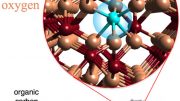




awesome…this is a neat solution..Quaise Energy is also very cool… there are ways ….if only we had real leaders who concerned themselves with solving real problems for the climate and energy intead of political illusions
I am so glad steel is being used to aid in climate restoration of clean water and clean air. I was a steel worker at Kaiser Steel’s O2 plant in the 60’s
The Earth has been warming since the end of the Maunder Minimum in 1715 well before automobiles and industrial processes that release CO2 were invented. Professor Valentina just coauthored a study that says the Earth and Sun have been getting closer with the Earth receiving more energy from the Sun every year which is raising the temperatures on the Earth. They are expected to get closer over the next 700 years at which time they will start to separate again. Temperatures should increase by about 3 degrees Celsius over that time.
Erratum – baseline magnetic field oscillations: possible SIM effects on solar irradiance and
temperature at Earth
https://solargsm.com/wp-content/uploads/2020/03/zharkova_paper3_erratum_subm4_arc.pdf
‘RETRACTED ARTICLE: Oscillations of the baseline of solar magnetic field and solar irradiance on a millennial timescale’
https://www.nature.com/articles/s41598-019-45584-3
It should read Professor Valentina Zharkova
The U.N. has it backwards. The Earth is still moving constantly closer to the Sun for the next 700 years (the Hallstatt cycle) which has been making the Earth and the oceans warmer and the oceans are releasing more CO2 as a result.
Warming up Earth a little bit is a very good idea. But, water has to be pumped up onto other planets that need water to cool down. (A JOKE? May be only until it is figured out and carried out somehow in the distant future?)
About 4.6 million people die every year due to cool weather mainly from increased heart attacks and strokes during the winter, about 500,000 die every year from warm weather.
‘Global, regional and national burden of mortality associated with nonoptimal ambient temperatures from 2000 to 2019: a three-stage modelling study’
https://www.thelancet.com/journals/lanplh/article/PIIS2542-5196(21)00081-4/fulltext
I swear I’ve seen that iron burning like that before somewhere…oh yeah, iron wool in oxygen….